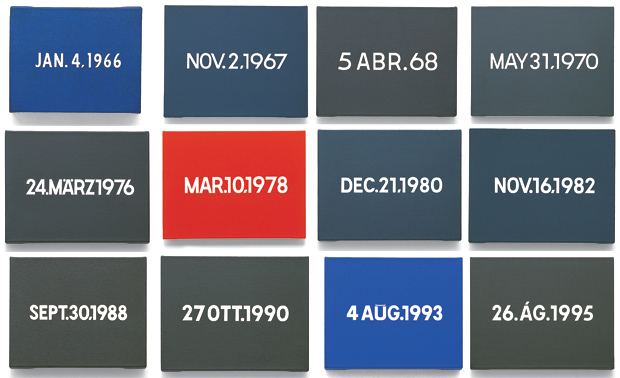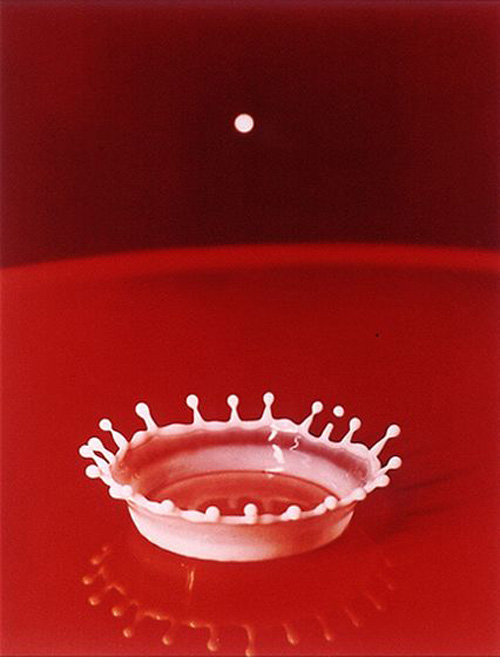Thursday, October 24, 2013
Cornelia Parker
 |
|
 |
|
 |
| Cold Dark Matter: An Exploded View 1991 |
 |
| Object That Fell off the White Cliffs of Dover |
via Tate:
English sculptor and installation artist. She undertook her BFA at Wolverhampton Polytechnic (1975–8) and her MFA at Reading University (1980–82). Her early installation works were imbued with poetic innuendos linked to the fragility of human experience.Cold Dark Matter: An Exploded View (1991, London, Tate) is the restored three-dimensional volume of a garden shed exploded by the British Army at the request of the artist. The surviving fragments, suspended from the ceiling and lit by a single bulb, create a dramatic effect and cast shadows on the gallery's walls. Parker worked not only with the altered scale and substance of things, but also with the meaning conveyed by found objects. The Maybe, an exhibition made in collaboration with the actress Tilda Swinton (b. 1960) in 1995 (London, Serpentine Gal.) focused on the impressions that one has when confronted with the belongings of famous people. Parker selected curiosities from various museums, including Turner's watercolour box, Queen Victoria's stockings and Sigmund Freud's blanket, in order to elicit free associations from the beholder. Swinton was herself on display, asleep in another glass case. Parker's aim was not merely to question the power of relics, but also to create a mental route that triggers unexpected associations. The unconscious thread was made more humorously explicit in The Pornographic Drawings (1996, London, Tate) in which drawings resembling Rorschach blots were created from pornographic videotapes dissolved in solvent, the resulting marks resembling genitalia. She was shortlisted for the 1997 Turner Prize.
Bibliography
Cornelia Parker–Avoided Object (exh. cat., essays G. Brett and others, Cardiff, Chapter A. Cent., 1998)
Cornelia Parker, (exh. cat., Boston, MA, ICA, 2000)
Cornelia Parker–Avoided Object (exh. cat., essays G. Brett and others, Cardiff, Chapter A. Cent., 1998)
Cornelia Parker, (exh. cat., Boston, MA, ICA, 2000)
Beth Campbell
 |
| My potential future based on present circumstances (1/07/09), pencil on paper, 50 x 38.5 inches, 2009 (detail) |
 |
| My potential future based on present circumstances (1/07/09), pencil on paper, 50 x 38.5 inches, 2009 |
On Kawara
 |
| installation/ David Zwirner Gallery |
 |
| On Kawara, canvases from the 'Today Series' (1966 - present) |
 |
| I got up... 1977 |
About this artist
SOURCE: OXFORD UNIVERSITY PRESS
Japanese painter, draughtsman and conceptual artist, active in the USA. After graduating from Kariya High School in 1951, he moved to Tokyo, exhibiting at the Yomiuri Independent Exhibitions. His sensibility for a cold materialism became apparent in his series of drawings Bathroom, of dismembered grotesque nude bodies (1953–4; Tokyo, N. Mus. Mod. A.). Kawara went to Mexico in 1959 and travelled through Europe. He settled in New York in 1965. His renowned series ofDate Paintings (from 1965), made in various cities on his travels, juxtapose a detail from a local newspaper with a simple record of the date in typographical letters and numbers on monochrome canvases using acrylic. The paintings’ principal meaning was that the artist and viewer shared the numbers that signified a date they both had lived. In the series of telegrams in the 1970s, which sent the message ‘I am still alive’ to his friends, he used the verification of his own existence as a statement in a medium whose abstraction, regardless of the artist’s hand, paradoxically gave his work a tense reality. His other work in book form, One Million Years (Past, 1970–71; and Future, 1980; both artist’s col., see 1980 exh. cat., pp. 116–23, 124–9), consists of one million years typewritten year by year. Such works exploring concepts of time and space led Kawara to be regarded as a leading conceptual artist.
Akira Tatehata
From Grove Art Online
From Grove Art Online
© 2009 Oxford University Press
Labels:
On Kawara,
representing time
Sunday, October 13, 2013
Edward Muybridge
Via MOMA
About this artist
SOURCE: OXFORD UNIVERSITY PRESS
English photographer, active in the USA. He was the first to analyse motion successfully by using a sequence of photographs and resynthesizing them to produce moving pictures on a screen. His work has been described as the inspiration behind the invention of the motion picture.
Born Edward James Muggeridge, he emigrated around 1852 to the USA, where he first worked for a firm of publishers and later became a book dealer. After a stagecoach accident in Texas in 1860, he returned to England, where he took up photography. By 1867 he was back in California, describing himself as ‘Eadweard Muybridge, artist–photographer’. During the next five years he took over 2000 photographs, selling many of them under the pseudonym Helios. Muybridge made his name as a photographer with a successful series of views, Scenery of the Yosemite Valley, published in 1868. In 1872 he was commissioned by a former governor of California, leland Stanford, to photograph his horse, Occident, trotting at speed. The aim was to test Stanford’s theory that at some stage in its trot the horse would have all four feet off the ground. Muybridge’s first photographs were inconclusive, but further attempts in 1873 appeared to prove the point, at least to Stanford’s satisfaction. Work was interrupted by a dramatic crisis when Muybridge, tried for killing his wife’s lover and acquitted, found it prudent to make a photographic expedition to Central America.
In 1877 Muybridge returned to the problem of the trotting horse and began the work which was to make him famous. He designed an improved shutter to work at the astonishing speed of one-thousandth of a second and used all his experience to sensitize his plates for the shortest possible exposure. When the resulting retouched picture of Occident in arrested motion was published in July 1877, it was so different from the traditional artist’s impression that it created a minor sensation . The next year Muybridge embarked on an even more ambitious series of experiments. In order to secure a sequence of photographs of horses in various stages of trotting, he set up a battery of 12 cameras fitted with electromagnetic shutters. These were activated by strings stretched across the track. Muybridge later repeated his experiments using 24 cameras. The subsequent photographs were widely reproduced in publications throughout America and Europe. The publicity led Muybridge to design a projecting device based on an optical toy by which drawings derived from his photographs could be projected on to a screen as moving pictures. During the early 1880s he toured Europe with this instrument, termed the zoopraxiscope, and a large collection of lantern slides. With the latter he was able to demonstrate that artists throughout the ages had depicted the horse in attitudes that were completely false.
On his return to America, Muybridge quarrelled with Stanford, but in 1884 he was able to begin work at the University of Pennsylvania using elaborate banks of cameras to analyse animal and human motion by means of photographs. He took over 100,000 photographs, 20,000 of which were reproduced in his major publication, Animal Locomotion (London, 1887; for example). This 11-volume work had a tremendous impact, not least on artists, who were forced to reassess completely the manner in which they depicted animal movement.
Muybridge finally returned to England in 1900. He bequeathed numerous relics of his work to Kingston-on-Thames Public Library, a great proportion of which is on loan to the Science Museum, London. Other major repositories of Muybridge’s work include the Bancroft Library at the University of California, Berkeley, the Stanford University Library and the Stanford University Art Gallery and Museum.
J. P. Ward
From Grove Art Online
From Grove Art Online
Labels:
moma,
muybridge,
representing time
Monday, October 7, 2013
TUESDAY
Tomorrow, we will meet at 1 p.m. in CBS Auditorium for a lecture by Squeak Carnwath.


Labels:
class,
lecture,
Squeak Carnwath
Thursday, October 3, 2013
Fleisher Ollman
|
Labels:
exhibitions,
Fleisher Ollman,
opening
Subscribe to:
Posts (Atom)








